As an avid horror reader who’s quick to recommend books to anyone who stays still long enough, I’ve gotten very used to fielding follow-up questions like “But how scary is it really?” and “I can’t watch horror movies at all—should I still read this?” Obviously fear is highly subjective—what slaps my “turn all the lights on, you’re not sleeping tonight” buttons may be entirely snooze-worthy for you—but I’ve come to have a pretty accurate understanding of how people are going to respond to a given book.
While the name of the genre tends to imply a uniformly high scare density, horror is a very broad genre, and there really is something for everybody—whether you’re a horror pro who likes the gore and tension dialed up to 11 or a gentle soul who can’t deal with even a light dismembering.
[A quick note to preempt some comments: there’s no Stephen King on this list because, frankly, nobody needs my help to find Stephen King books. Also, Pet Sematary is his scariest book. BYE.]
Low Tolerance
If Hocus Pocus and Practical Magic are about as scary as you’re willing to go, read: White is for Witching by Helen Oyeyemi.
Buy the Book
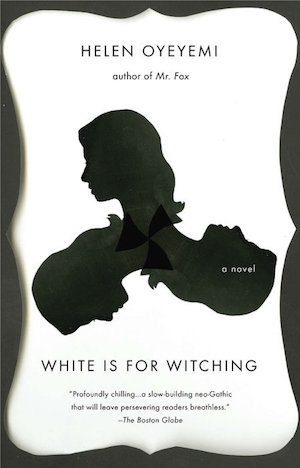

White is for Witching
This is the haunted house novel on gentle mode, but that doesn’t make it any less stunning. All the elements are here: a hostile house with fairly definite opinions on who it does and does not like, a girl who eats chalk and seems to be disappearing into the woodwork, a menacing elevator, and, of course, ghosts. It’s unsettling, eerie, and beautiful, but never tips over into being outright terrifying, preferring to dwell in the atmospheric gray area between supernatural and mundane horrors, and in the ways we are and aren’t complicit with our circumstances.
Other recommendations at this level:
- The Monster of Elendhaven by Jennifer Giesbrecht
- We Have Always Lived in the Castle by Shirley Jackson
- The Library at Mount Char by Scott Hawkins
Medium-Low Tolerance
If Zombieland was about your speed, read: Lovecraft Country by Matt Ruff.
Buy the Book
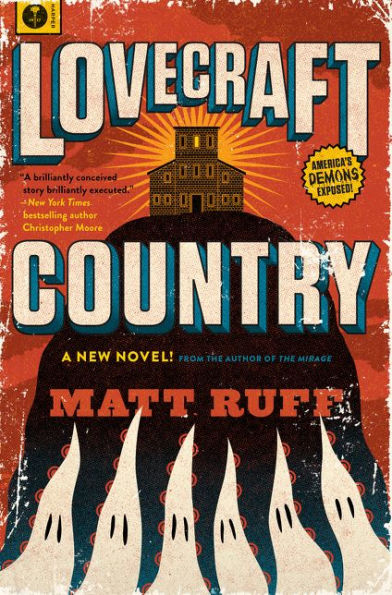

Lovecraft Country
More a series of linked stories than a traditional novel, Lovecraft Country (soon to be an HBO miniseries produced by J.J. Abrams and Jordan Peele) is a remarkable accomplishment. Matt Ruff weaves together lightly fictionalized history (for example, the Safe Negro Travel Guide, this novel’s equivalent of the Green Book), cosmic horror, and the quotidian horrors of midcentury anti-Black racism, and populates his novel with a cast of fully-realized and fascinating characters. There’s something in this novel for everybody – one episode focuses on a haunted hotel, while another sees an astronomer walking through a portal into another world – and while the supernatural elements here can be pretty creepy, the emphasis is always solidly on character and family. And, cosmic horror aside, it’s a chilling depiction of the insidious effects of living in a country that hates you.
Other recommendation at this level:
- In The Woods by Tana French
- The Changeling by Victor LaValle
Medium Tolerance
Get Out? Us? No problem. Read: Wylding Hall by Elizabeth Hand.
Buy the Book
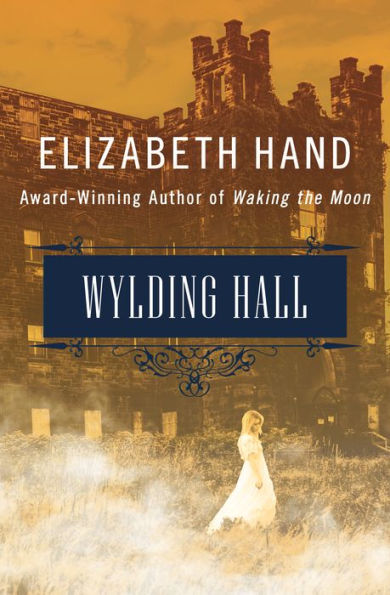

Wylding Hall
This short, engrossing novel is an under-appreciated gem, and the perfect creepy October read. It’s the story of a legendary acid folk band and the summer they spent recording their seminal album in a decaying country house, told through a series of interviews with the surviving members of the band and their manager. Julian, the band’s driving creative force and lead singer, disappeared that summer, a mystery that remains unsolved decades later. But that wasn’t the only strange occurrence at Wylding Hall during those few months—the house, the surrounding woods, and the neighboring town were all more than a little uncanny. And then there was the girl in the white dress who appeared at Julian’s side one night and disappeared when he did…
This book is tense and creepy throughout, but there’s one culminating scare that I still find myself thinking about when I’m staring at the ceiling at 3am.
Other recommendations at this level:
- Zone One by Colson Whitehead
- Broken Monsters by Lauren Beukes
- Into the Drowning Deep by Mira Grant
- The Family Plot by Cherie Priest
Medium-High Tolerance
You made it through It Follows, even if you’ve been looking over your shoulder ever since… Read: The Fisherman by John Langan.
Buy the Book
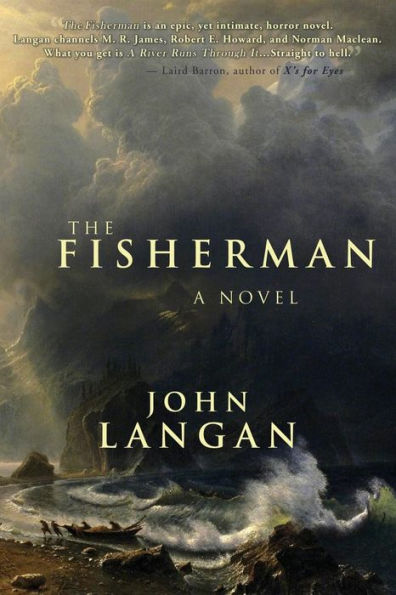

The Fisherman
This is a word-of-mouth favorite among the horror fans I know, an unconventionally-structured tale that examines grief, loneliness, and the limits of friendship. Dan and Abe, both widowers, have found companionship through a mutual love of fishing. They’ve heard rumors of a spot where the creek runs clear and deep and the fish are plentiful—where downright magical things can happen—and despite a warning from a fellow fisherman, they’re determined to go find it. But what they find there is well beyond anything they could ever have hoped for, or feared.
A good chunk of the narrative here is set in the colonial past, in a community of immigrant workers building the Ashokan Reservoir in upstate New York who’re plagued by something unspeakably evil. In the hands of a lesser writer, a formal risk like that could bring the story grinding to a dead halt, but Langan writes with a deep understanding of human fallibility and emotion, and it’s a thrill and a terror to go along for the ride.
Other recommendations at this level:
- Occultation by Laird Barron
- Bird Box by Josh Malerman
- The House Next Door by Anne Rivers Siddons
High Tolerance
If you dozed through Hereditary, read: Hex by Thomas Olde Heuvelt.
Buy the Book
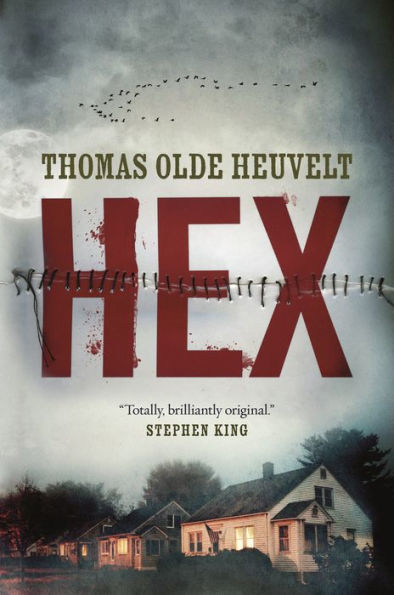

Hex
If you have a strong stomach and you’ve been reading horror for a while, you may find yourself (as I sometimes do) chasing the increasingly elusive high of realizing you’re in the middle of the scariest book you’ve ever read. I do think that this is the most subjective out of all of these levels, because it really does depend on what’s the most scary to you personally. For a lot of people, myself included, that’s hopelessness—the scariest of the scariest for me are the bleak books, the ones where there’s no light at the end of the tunnel. Hex sits head and shoulders above the rest on that front.
The residents of Black Spring can’t leave. There’s a curse on the town, and her name is Katherine. She’s been dead since the 1600s, when she was executed for witchcraft, but that doesn’t stop her from appearing around town at random—in the woods, on the streets, and in people’s homes. The town elders have worked very hard to keep Katherine a secret from the rest of the world, but for a group of younger residents, that secrecy is a yoke they’re not willing to bear any longer. Their efforts to expose Katherine will have devastating consequences for their families, and the town as a whole. I’m not willing to tell you much more about the plot, because it’s worth going into this one knowing as little as possible. Just know that this book goes there, in every sense.
Other recommendations at this level:
- The Cipher by Kathe Koja
- House of Leaves by Mark Danielewski
- Brother by Ania Ahlborn
- A Head Full of Ghosts by Paul Tremblay
Originally published in October 2019.
Emily Hughes wants to talk to you about scary books. You can find her elsewhere in Electric Literature and Brooklyn Magazine. Formerly the editor of Unbound Worlds, she now writes a newsletter about horror literature and tweets bad puns @emilyhughes.











The House Next Door was a huge letdown. I found the narrator to be pretentious, self centered. The book is…predictable imho.
I really love paranormal series. Here are my two favorites.
ELLIE JORDAN: GHOST TRAPPER, JL Bryan. Paranormal suspense on the level of dark fantasy. Book 1. Ellie Jordan must stop a powerful ghost terrorizing a young girl, but this old house has some terrible dark secrets that could kill them all. The best paranormal mystery about ghost hunters I’ve read. The research is spot on with current methods. Also, history, interesting characters, and a complex mystery.
SOUTHERN SPIRITS, Angie Fox. “The Southern Ghost Hunter Mysteries.” Book 1. Paranormal mystery with a light voice yet scary. Verity has inherited her beloved grandmother’s Southern mansion, but she’s going to lose it unless she gets a lot of money fast. An old urn in the attic contains the ghost of a Twenties mobster who decides to help her since he will lose his home, too, if the mansion is demolished. Her ghost-seeing abilities and the help of her mobster ghost get her a job trying to stop an extremely dangerous poltergeist from destroying an old brewery. Verity with her kindness to the living and dead, and gangster Frankie with his dark snark are a great duo. Also, a pet skunk!
@1: Agreed. I read The House Next Door when it first came out and found it dull and completely unmemorable. Any of Peter Strauss solo novels of the same era would be much better uses on one’s reading time.
And though I’ve never seen Hereditary, a good novel for those with a strong stomach would be The Light at the End, by John Skipp and Craig Spector. It’s about vampires in the subway.
Finally, Low Tolerance readers would be strongly rewarded by haunting libraries and second-hand stores for anything* by the late Charles L. Grant. His brand was literally “quiet horror.”
* “anything” that is from the 70s and 80s. After that he did a lot more humorous fantasy and media tie-in.
I would mark “Wylding Hall” as a Low Tolerance book – it’s mostly about folk-rock musicians, with gentle, background spookiness.
For low-medium tolerance, I’d recommend “The Sun Down Motel” by Simone St. James – it’s a cold-case murder mystery plus ghosts.
For those who want the pants scared off them – but who dislike extreme violence – I would greatly recommend these three reads, which are all full of ever-mounting dread but with very little blood:
“Penpal” by Dathan Auerbach
“The Twisted Ones” by T. Kingfisher
“The Hollow Ones” by T. Kingfisher (out on October 6th and even better than The Twisted Ones)
Wylding Hall is outstanding, as all of Liz’s work is. It’s especially tasty for Fairport Convention fans.
Like others I would put Wylding Hall in low tolerance. Not that it’s not good, all of Hand’s books are good, it was more spooky than scary.
Then again, like you said, everything’s subjective. I’m usually a medium-low tolerance, but I loved loved loved House of Leaves (seriously, if you haven’t read it, go, now, read it).
And for those who liked Into the Drowning Deep, there’s also Rolling in the Deep.
The Library at Mount Char? Low tolerance? Like Hocus Pocus tolerance? Y’all, there is some seriously fucked up stuff in that book. Like Clive Barker level horror.
It’s also amazing and everyone should read it as well as Shirley Jackson’s We Have Always Lived in the Castle (which I would put at medium tolerance – that book is creeeeepy.)
The Monster of Elendhaven
. . . wasn’t that the one excerpted here, with the casually detailed killing and mutilation of sex workers in the first chapter? If so, we have very different definitions for “light horror reads”.
I’ve never understood why so many people think House of Leaves terrifying; I like it, but I never found it more than slightly creepy in places.
@@@@@ Harmonyfb Simone St. James’ The Broken Girl was creepy. It was scarier than Sundown Motel to me
I’ve loved horror movies and books since my early teens. (Pet Semetary is one of SK’s scariest). I do prefer scary stories that rely on psychological or supernatural terror rather than blood and gore these days and can’t read anything with violence towards kids or animals, so I guess that makes me low-medium tolerance.
I absolutely refuse to read anything involving depersonalization (including the depersonalization of violence and desecration of bodily integrity) or despair, so We Have Always Lived in the Castle is about my limit (because while the despair of Constance is strongly implied, it’s Merricat telling the story).
Before I realized that I didn’t have to do that to myself, I used to read a lot of Dean Koontz. Not that he’s a bad author! He’s very good at getting you to see what he sees and extremely good at getting into the heads of his antagonists, so the stories kind of pulled me along–but those things I won’t read? He writes them really well. So back when I had some of his paperbacks, I marked certain pages with paper clips. Then I realized that life’s too short to do that to myself, and decided to read other things instead. Still, I think people with a medium or higher tolerance might enjoy his books. Phantoms is the scariest (rot13) svefg pbagnpg story I have ever read. Watchers is a svefg pbagnpg story of another kind, and furthermore features a bleakly funny take on the self-delusion of the brutal. Shadowfires is a merciless chronicle of self-inflicted depersonalization and also a monster movie. Midnight is about what happens when an amoral genius who failed to mature past the emotional disorder of early adolescence is handed a lot of money and unrestrained power, and also about why we need emotions. Hideaway is an extremely Catholic (actual Catholic, not movie Catholic) story about principalities and powers and the banality of evil.
I’m a diehard horror fan with a VERY high tolerance for scares. Yet Lovecraft Country hit me hard. Not the fantasy part of it –as excellent as it is– but the racism.
The first sundown town scene was so disturbing to me that I had to put the book down and did not go back to it for weeks. I’m glad I did, but I had to brace myself for it.
@@@@@ 4: ““The Hollow Ones” by T. Kingfisher (out on October 6th and even better than The Twisted Ones)”
That is just NOT POSSIBLE. I LOVE The Twisted Ones. I would have loved it without knowing Machen’s “The White People,” but having read it I enjoyed it even more.
(In fact, after I finished it the first time, I reread “The White People” and THEN reread The Twisted Ones right away.)
A Head Full of Ghosts was kind of a letdown for me. Good book, but not quite as good as I thought it was going to be, and not scary at all.
Hereditary, however, is probably one of the most disturbing movies I have ever watched. Unexpectedly, I was less shaken by…. well, other stuff, than by a scene where a certain woman screams at a certain young man from across the street. Oh, and the doormat scene. Doormats have never been so blood-curling.
My three favorite haunted house stories have an essential horror at their heart — not things that go bump and kill in the night, but slow mental erosion leading to the catastrophic loss of self. People change and make choices they would not normally consider making due to unknown and malignant forces or influences. Shirley Jackson, Haunting of Hill House. Richard Matheson, Hell House. Chet Williamson, Soulstorm. Oldies, but goodies!
Am I the only one who found Hex very dull? I am _not_ a horror person. _At all_. When it comes to horror movies I am a gigantic wiener. GIGANTIC WIENER! Which is why it’s kind of frustrating that in the last two years I’ve read several horror novels, from Horrorstor to Hex, The Deep to The Twisted Ones, and I’ve yet to find something that scares me. But Hex was only second to A God in the Shed for horror novels I just came away pretty bleh at.
Honestly, the best legit horror book I’ve read in the past couple of years was Your Favorite Band Can’t Save You. It’s not all that scary, but it’s really good.
I loved Paul Tremblay’s A Head Full of Ghosts, but I thought Cabin At the End of the World was much scarier.